Why is PM2.5 harmful in Thailand?
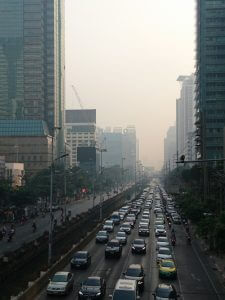
Bangkok’s hazy morning could be pleased to many people but this fog is actually a cluster of very small and dangerous dust particles that can easily enter and harm human’s body. The air quality of Bangkok has been getting worse since the second week of January. The pollution level (PM2.5) remains at hazardous level in many areas of Bangkok and the surrounding provinces. This year’s situation is worse than that in 2018. Experts conclude that the combustion from diesel engines, burning of biomass and industrial activities are the main causes of the situations from both inside country and neighboring countries. From the study, Bangkok’s PM2.5 haze usually occurs in drought season or cold season of Thailand due to the stagnant air movement. In the big picture, the haze problems also takes place in other ASEAN countries such as Myanmar, Laos and Cambodia. This could be a failure of Asean Agreement on Transboundary Haze Pollution (AATHP) to enforce its members to stop expansion of monoculture farming and rapid deforestation.
What is PM 2.5?
PM2.5 dust is any particle that is smaller than 2.5 microns which is comparable to bacteria size. Human’s hair has an average size around 50 microns and PM2.5 dust is 20 times smaller than human’s hair. Thus, the particles can easily penetrate the nasal hair to the lungs which can increase the risk of lung cancer. PM2.5 is the main pollutants in many countries like China, USA and European countries as it can stay in the atmosphere for a long time and can travel for a long distance. The sources of PM2.5 are mainly from the diesel engine combustion, the burning of biomass, dust from combining of pollutant gases and the industrial activities.
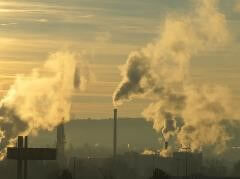
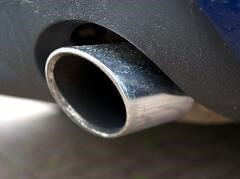
Impacts of PM2.5 and StandardsImpacts of PM2.5 and Standards
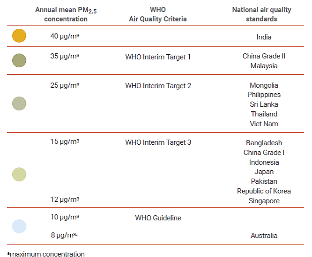
Because of its tiny size, PM2.5 can easily enter human’s lungs and bloodstream which can obviously affect human’s health. The study shows that the PM2.5 can cause respiratory disease, cardiovascular disease, cancer or even death. Children, elderly and pregnant women will be more risky to PM2.5 than adults. Long term exposure to PM2.5 might be an important risk factor of hypertension in adults and can even deteriorate the reproductive system. According to Thailand’s standard, the PM2.5 level should not exceed 50 micrograms per cubic meter of air, while the WHO’s standard is set at 25 micrograms per cubic meter of air.
Countermeasures
The Pollution Control Department strictly orders the vehicles emitting black smoke off the roads and to prevent people from lighting a fire outdoors, and asks people to reduce their use of private vehicles. However, these actions may not be effective immediately.
The help from meteorological factors such as weather (temperature and wind speed) and precipitation could be the best option. The study has found that the high temperature weather was more helpful to diffusion of pollutants than the low temperature. The rainfall also affects the removal of particles. The average PM2.5 concentration decreased by 56.3% after the rainfall by the PM2.5 concentration remains after 1 hour of rainfall and will keep declining within the next 12 hours. Therefore, there is an attempt of rainmaking to settle the dust.
The simplest way people can protect themselves is to wear N95 mask when going outdoor which is more capable of filtering the PM2.5 than the normal mask. Since the outdoor PM2.5 pollution cannot be easily controlled, it is important to control the indoor air quality by using the air filter.
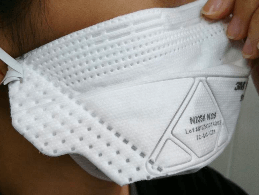
Applications for checking PM2.5
The air quality can be checked by the following applications and website.
-Air4thai (application)
-AirVisual (application)
-http://air4thai.pcd.go.th/webV2/
-https://aqicn.org/city/
-https://www.airvisual.com/
The graph below indicates the changes in the mass density of PM2.5 at one of the monitoring station in center area of Bangkok from 1st January 2019 to 15th February 2019.
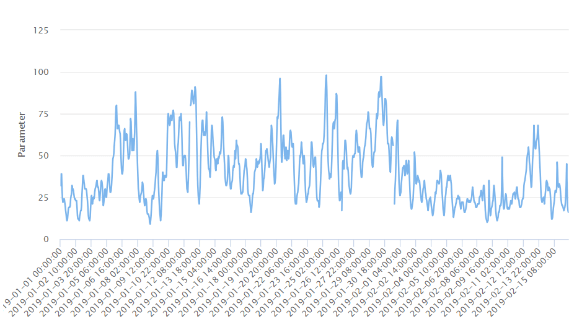
References
- https://www.beartai.com/article/tech-article/303260
- https://thaipublica.org/2019/01/air-pollution-pm10-pm2-5/
- https://www.bangkokpost.com/news/general/1610854/bangkok-air-pollution-remains-at-hazardous-levels
- http://www.nationmultimedia.com/detail/national/30343974?fbclid=IwAR3kN-1X0MXD2guaftMiNAWu9RuM83uH6d0p2LeI4NF1oApFBpv1ff2-FCg
- https://www.ncbi.nlm.nih.gov/pmc/articles/PMC5876983/
- https://aqicn.org/city/thailand/bangkok/chulalongkorn-hospital/
- http://www.ccacoalition.org/en/content/air-pollution-measures-asia-and-pacific